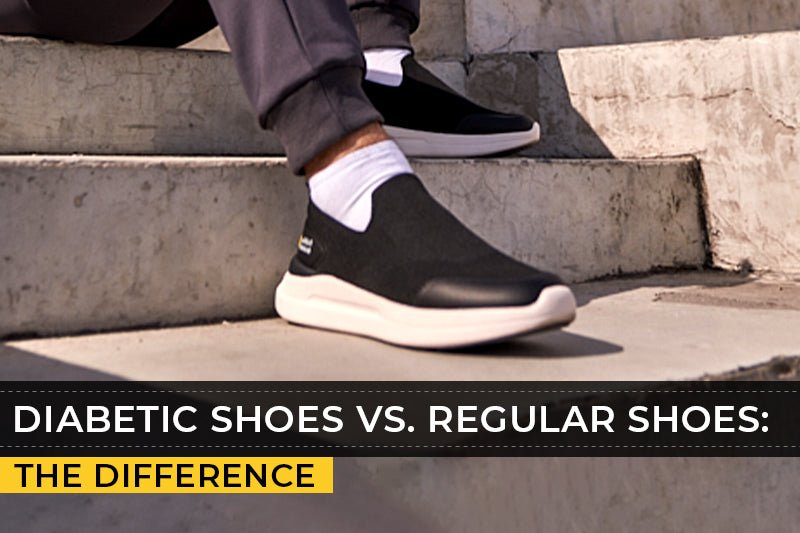Diabetic Shoes vs. Regular Shoes: The Difference

Diabetic shoes and regular shoes differ in a several ways. Diabetic shoes are specially designed to reduce the risk of foot injuries, particularly for individuals with diabetes, who are at a higher risk of developing foot-related complications.
Key differences between diabetic shoes and regular shoes:
Fit: Diabetic shoes are designed to provide a non-constrictive fit like FitVille EasyTop Diabetic Shoes and FitVille EasyTop Wings V2. They are often made with extra depth, a wide toe box, and soft, flexible materials to accommodate swelling or deformities.
Sole: The soles of diabetic shoes are typically thicker and have a more shock-absorbing material. This helps to reduce pressure on the feet and prevent injuries.
Materials: Diabetic shoes are often made of breathable, moisture-wicking materials like FitVille BriskWalk Recovery Slip-On Shoes to keep feet dry and prevent fungal infections.
Insoles: Many diabetic shoes come with removable insoles that can be replaced with custom orthotics or other specialized inserts that help with foot support and comfort like FitVille Recovery Clog.
Protection: Diabetic shoes may have additional protection features like reinforced heels to protect against bumps and bruises that could lead to ulcers.
About FitVille Footwear
Just Follow us on LinkedIn, Facebook, YouTube, Instagram, RSS feed and Pinterest to catch our brand news.
What FitViller Prefers
Best Shoes to Buy

Popular Men's Shoes

Popular Women's Shoes


































